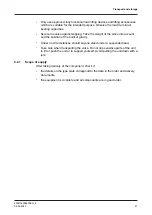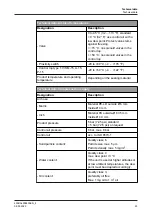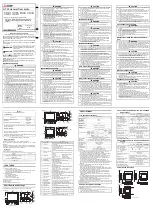
5.3
Resistance and permitted operating temperature of the sealing materials
The resistance and permitted operating temperature of the sealing materials
depend on the type and temperature of the medium conveyed. The exposure
time can adversely affect the service life of the seals. The sealing materials
comply with the regulations of FDA 21 CFR 177.2600 or FDA 21 CFR 177.1550.
The maximum operating temperature is defined by the sealing type and its
mechanical load.
Due to the versatile conditions of use (e.g. usage duration, switching frequency,
type and temperature of product and cleaning agents as well as usage
environment), GEA Tuchenhagen recommends that the user carries out
resistance tests.
Resistance:
•
+ = good resistance
•
o = reduced resistance
•
– = no resistance
Table of sealing resistance / permitted operating temperature
Medium
Maximum
operating
temperatures
Sealing materials
EPDM
FKM
HNBR
TEFASEP gold
Alkalis up to 3%
up to 80 °C (176°F)
+
o
+
+
Alkalis up to 5%
up to 40 °C (104°F)
+
o
o
+
Alkalis up to 5%
up to 80 °C (176° F)
+
–
–
+
Alkalis more than
5%
o
–
–
+
Inorganic acids up
to 3%
up to 80 °C (176°F)
+
+
+
+
Inorganic acids up
to 5%
up to 80 °C (176°F)
o
+
o
+
Inorganic acids up
to 5%
up to 100 °C
(212°F)
–
+
–
+
Water
up to 80 °C (176°F)
+
+
+
+
Steam
up to 135 °C (275°
F)
+
o
o
+
Steam, approx. 30
min
up to 150 °C
(320°F)
+
o
–
+
Steam, approx. 30
min
up to 160 °C
(320°F)
–
o
–
+
Fuels/hydrocarbons
–
+
+
+
Product with a fat
content of max.
35%
+
+
+
+
Product with a fat
content of more
than 35%
–
+
+
+
Oils
–
+
+
+
Technical data
Resistance and permitted operating temperature of the sealing materials
430BAL008430EN_4
24
08.03.2022
Summary of Contents for VARIVENT X
Page 87: ...Appendix 430BAL008430EN_4 08 03 2022 87 ...
Page 88: ......















































